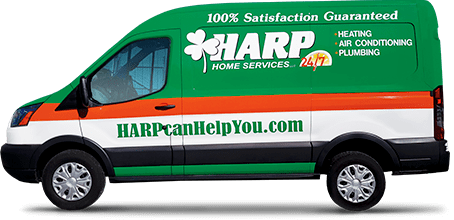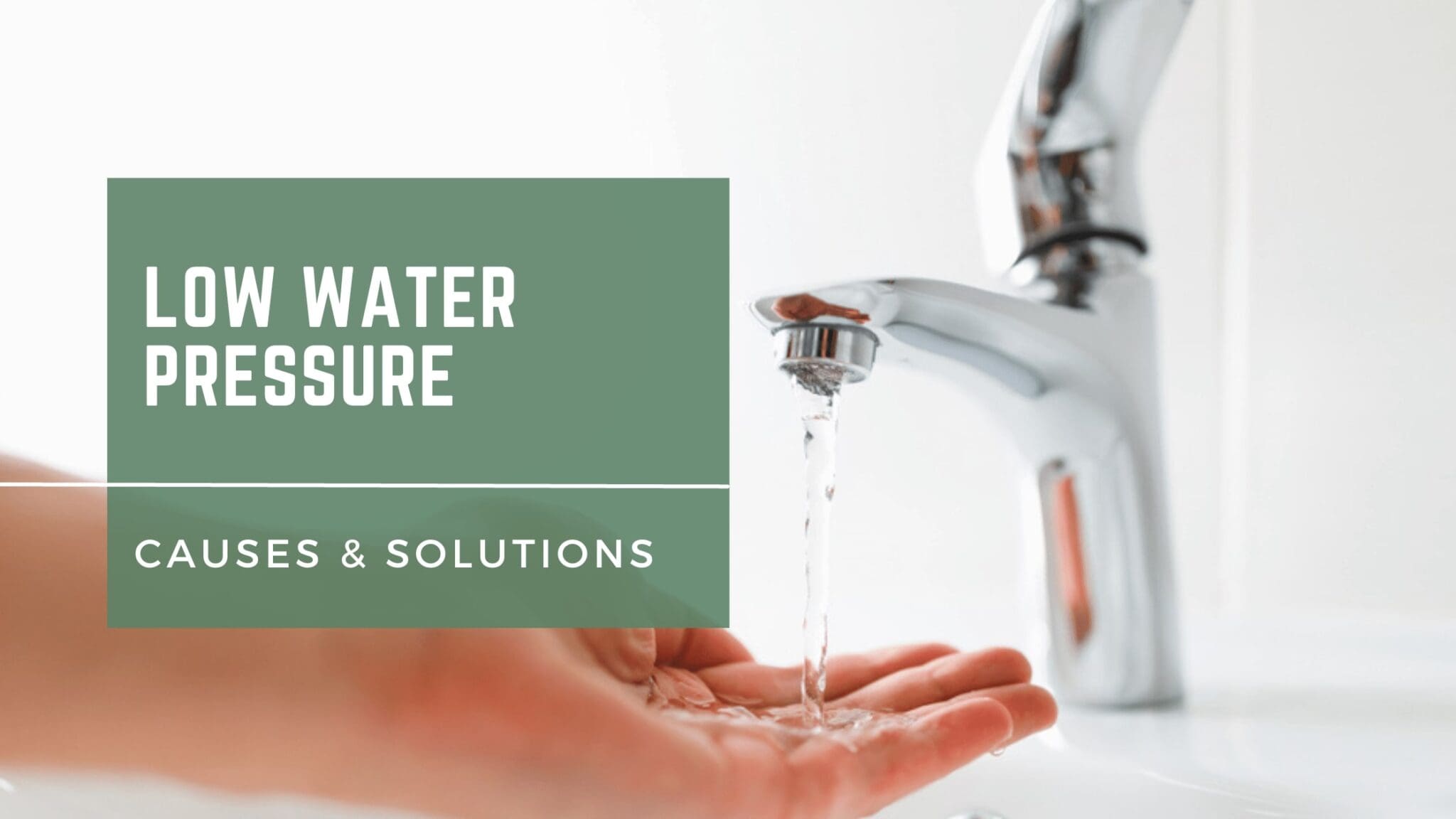
Low water pressure in your house can leave you with a lackluster shower, prevent you from properly washing your hands, and make it take forever to fill a pot of water. These are issues no homeowner wants to deal with. Bringing the pressure back up is an obvious priority.
If you’re wondering why your water pressure is so low, you’re not alone. Luckily, we have solutions to help you determine the issue and fix it quickly.
Understanding Water Pressure
The water within any building should remain under a certain pressure level. If it were too low, water would slowly seep out of fixtures rather than jetting out with gusto. If it’s too high, it can lead to dangerous issues.
Water pressure is measured by how fast the water flows, which is measured in gallons per minute (GPM). You can test the water flow in your home by letting an outdoor hose flow into a bucket. The number of gallons in the bucket after a minute gives you your GPM. An ideal GPM is anywhere between 6 and 12. If your home’s water pressure falls below this number, you’re dealing with low water pressure.
Why Is My Water Pressure Low?
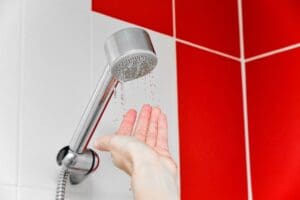
Low water pressure isn’t an issue with a single cause. Many different problems can contribute to low water pressure. The answer may be any one of these problems or multiple problems working in unison.
Plumbing Issues
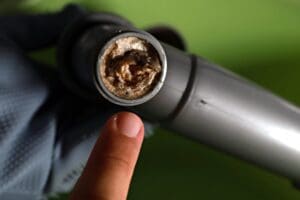
If water pressure is low in your house, it’s often the result of an issue with the plumbing that will require plumbing services. This can come from any of these places:
1. Clogged pipes
If a pipe has a clog, water has a tougher time passing through it. This will cause water to pass through slower, which leads to lower pressure.
2. Leaking or damaged pipes
A pipe with a leak or some other source of damage will always have less pressure than it would have without these problems. This is because the leak or damage gives the water pressure an outlet to escape. This reduces the amount of pressure present in the whole system. Think of it like a balloon; if a balloon has a small hole in it, the amount of pressure within the balloon is constantly fading.
3. Corrosion
Some pipes develop a layer of corrosion on the interior. This layer of corrosion leaves less room for water to pass through. Essentially, the corrosion acts like a small clog, as it restricts the flow of water and causes a drop in pressure.
4. Problems with the plumbing system’s design
In some systems, the water never had a chance to run without pressure issues. The system could have been designed with problems that constantly reduce water pressure.
Water Supply Issues
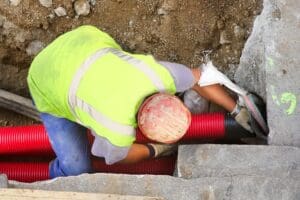
Sometimes, the source of water pressure problems doesn’t originate with the building’s plumbing. Instead, it comes from the flow of water into the building. This could be from one of two places:
5. Issues with the water source
If your home gets water from a well, the problem may be from this water source. Wells can run low and may take some time to rebuild their water supply. This can be particularly true if you’ve recently been using a lot of water or if there has recently been a lack of rain.
6. Municipal supply line problems
If your home gets water from a municipal supply line, the issue could be from a large number of shared problems. A major leak could be siphoning off pressure on the whole system. They could also be in the middle of flushing hydrants and, thus, are using a lot of water at the moment. These issues tend to clear up relatively quickly. If they don’t, they’re worth contacting your municipality about.
How to Troubleshoot Low Water Pressure
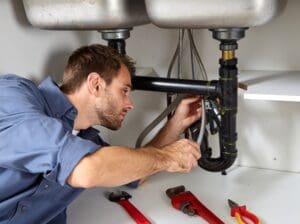
1. See how far the issue goes
To determine the source of the problem, you first must determine its extent. See if the problem is just with a single fixture within your home or if you have no water pressure in the house at all. If it’s a problem throughout your home, talk to your neighbors to see if they’re having similar issues. Knowing how far the issue spreads lets you know what to focus on and gives you a better idea of what the underlying cause may be.
2. Look for clogs
If you find that the issue is limited to one or more fixtures, you may be dealing with a clog. Clogs are one of the primary culprits when it comes to low water pressure. You can check for clogs in your fixtures by physically examining them and giving them a good cleaning. You can also use professional drainage services to deal with larger clogs.
3. Examine the pipes
If the issue is impacting the entire house, the pipes may be the problem. Start by determining what kind of pipes you have and figuring out how old they are. Some pipes, like polybutylene pipes, are prone to issues like leaking or even large ruptures. Other pipes will start to wear out over time. For example, PVC pipes usually last around 40 years. Figuring out the type of pipes you have and their age lets you know if you should expect problems on any of these fronts.
4. Look for leaks
You should examine every pipe that you can see for leaks. Look for any pipes that are actively leaking and for any pools of water that have appeared underneath the pipes. For pipes you can’t see, like pipes in the walls and floors, look for signs of water damage or the smell of mold.
How to Increase Water Pressure
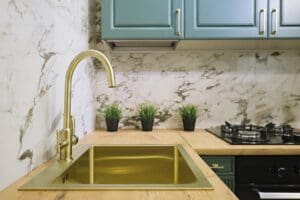
If you want to increase the water pressure in your shower, sink, or any other part of your home, here’s what you can do.
Check the Steps Above, and Clean Faucets, Drains, and Visible Pipes
You can start making progress toward increasing your water pressure by running through the troubleshooting steps listed above. This can help you determine if there’s any specific problem so you can find a solution. Cleaning and draining pipes can also help restore an appropriate water pressure level.
Replace Plumbing Fixtures
If you’ve determined that the problem lies in a single fixture, you can simply replace the plumbing fixture. This will allow you to install a brand-new, problem-free fixture in its place. If it’s a fixture that uses electricity, you may need our 24-hour electrical services.
Flush the Water Heater
A drop in water pressure can be caused by the water heater. This may be the result of a build-up of sediment within the water heater. In this case, flushing it will help. This removes anything from the water and allows the sediment to leave with it. Then, you can fill the heater back up with clean water to put it back on the right track.
This is a task that is best left to the professionals. Luckily, you can schedule online now to receive assistance in no time.
Clean or Replace Aerators
Aerators are located at the ends of various fixtures, like faucets and some shower heads. These aerators contain many small holes that are prone to clogs and other issues. Cleaning them lets you clear up any minor issues quickly. Replacing them solves more major issues and ensures there’s no longer a problem with the aerator.
Hire a Professional Plumber for In-Depth Pipe Clearing and Leak Repair
This is easily the most effective solution when it comes to solving low water pressure issues. Hiring a professional plumber allows you to use their years of experience in fixing pressure-related issues. This gives you the best chance at determining exactly what the source of the problem is.
Professional plumbers can also solve the issue better than you could. If you’re in any of Harp Home Services’ Connecticut service areas, you’re particularly lucky. You can take advantage of one of the best plumbing services in the business. With HARP, your home’s water pressure will be back to normal in no time.


